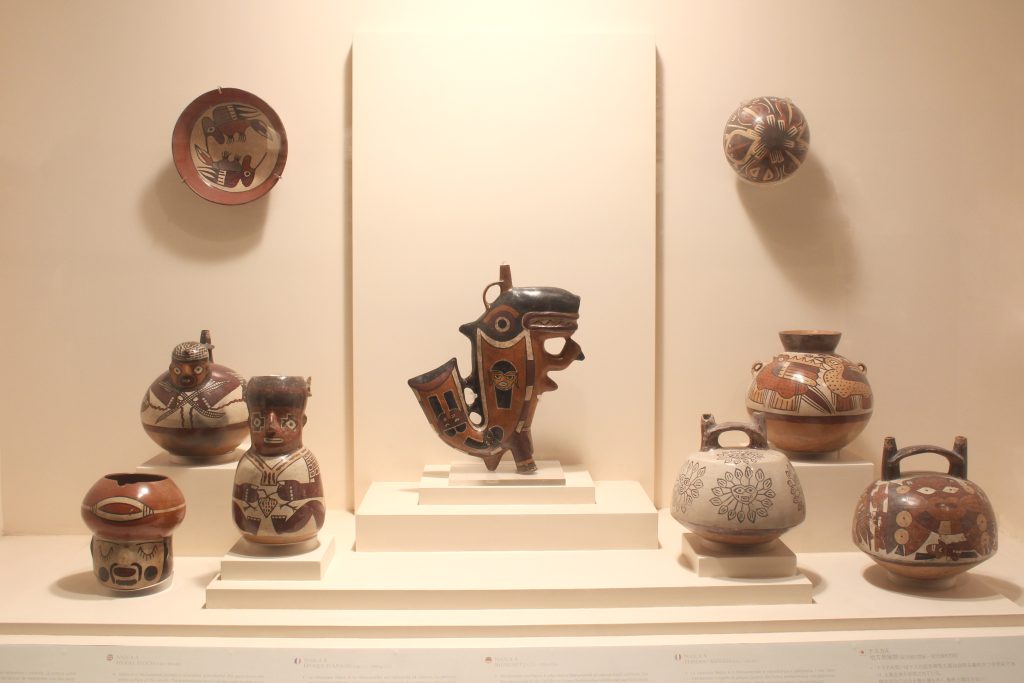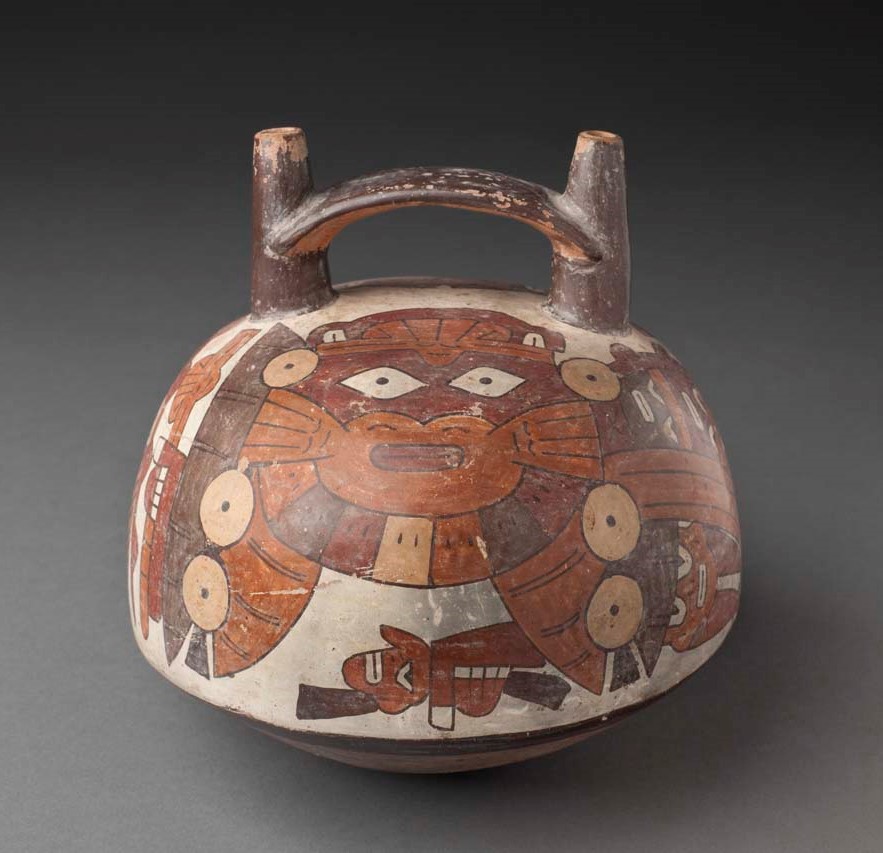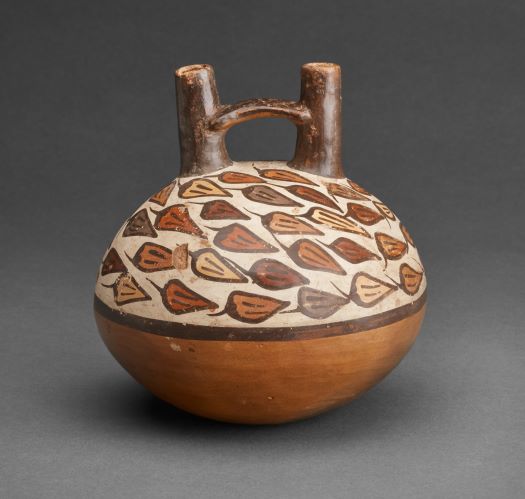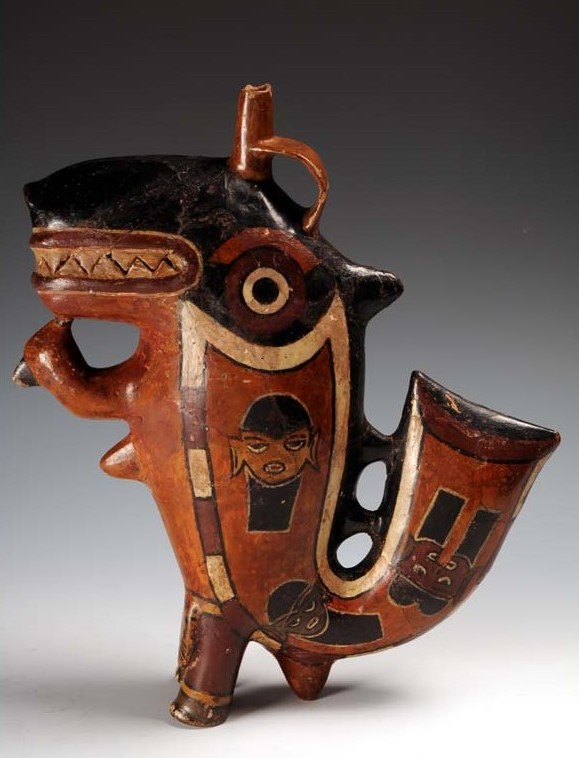Nasca Culture
Room 4, Vitrine 34
Ceramic
Peruvian Southern Coast
Florescent Epoch (1 AD – 800 AD)
ML010365, ML013684, ML031875, ML031876, ML031877, ML031879, ML031880, ML031881, ML031882, ML040349.
Life in the Nasca culture was filled with rituals and celebrations associated with the fertility of the land and the cult of the dead.
The Nasca society lived on the south coast of Peru, which is a desert region. They needed to improve the fertility of their land, and to this end they developed great knowledge regarding water sources, both in the form of surface water from the rains which fell in the highlands and subterranean supplies. It was also important for them to understand the behavior of animals and the lifecycles of plants.
The Nasca made pilgrimages to their main temples at Cahuachi, where they danced and played instruments such as panpipes and drums. Their roads and ceremonial spaces were inserted into the landscape in the form of the famous Nazca Lines.
In these ceremonies, they used very fine ceramic vessels to hold beverages, foods and other substances, possibly of a hallucinogenic nature, which were used by their shamans. The people dressed themselves in colorful textiles and bright ornaments. They carried woven and feather standards.
The designs of the colorful Nasca ceramics feature natural and supernatural creatures, as well as stylized representations of humans adorned as they would have been when participating in rituals.
Another important subject of this art is the representation of trophy heads. Sometimes these were carried by humans with supernatural features and by mythological beings. In other cases they formed part of their bodies or clothing. Trophy heads were won in ritual battles and then used in ceremonies.



